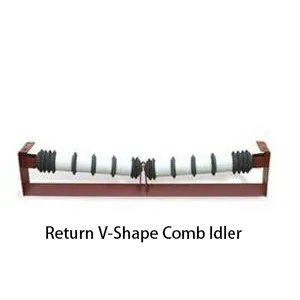 Afrikaans
Afrikaans  Albanian
Albanian  Amharic
Amharic  Arabic
Arabic  Armenian
Armenian  Azerbaijani
Azerbaijani  Basque
Basque  Belarusian
Belarusian  Bengali
Bengali  Bosnian
Bosnian  Bulgarian
Bulgarian  Catalan
Catalan  Cebuano
Cebuano  Corsican
Corsican  Croatian
Croatian  Czech
Czech  Danish
Danish  Dutch
Dutch  English
English  Esperanto
Esperanto  Estonian
Estonian  Finnish
Finnish  French
French  Frisian
Frisian  Galician
Galician  Georgian
Georgian  German
German  Greek
Greek  Gujarati
Gujarati  Haitian Creole
Haitian Creole  hausa
hausa  hawaiian
hawaiian  Hebrew
Hebrew  Hindi
Hindi  Miao
Miao  Hungarian
Hungarian  Icelandic
Icelandic  igbo
igbo  Indonesian
Indonesian  irish
irish  Italian
Italian  Japanese
Japanese  Javanese
Javanese  Kannada
Kannada  kazakh
kazakh  Khmer
Khmer  Rwandese
Rwandese  Korean
Korean  Kurdish
Kurdish  Kyrgyz
Kyrgyz  Lao
Lao  Latin
Latin  Latvian
Latvian  Lithuanian
Lithuanian  Luxembourgish
Luxembourgish  Macedonian
Macedonian  Malgashi
Malgashi  Malay
Malay  Malayalam
Malayalam  Maltese
Maltese  Maori
Maori  Marathi
Marathi  Mongolian
Mongolian  Myanmar
Myanmar  Nepali
Nepali  Norwegian
Norwegian  Norwegian
Norwegian  Occitan
Occitan  Pashto
Pashto  Persian
Persian  Polish
Polish  Portuguese
Portuguese  Punjabi
Punjabi  Romanian
Romanian  Russian
Russian  Samoan
Samoan  Scottish Gaelic
Scottish Gaelic  Serbian
Serbian  Sesotho
Sesotho  Shona
Shona  Sindhi
Sindhi  Sinhala
Sinhala  Slovak
Slovak  Slovenian
Slovenian  Somali
Somali  Spanish
Spanish  Sundanese
Sundanese  Swahili
Swahili  Swedish
Swedish  Tagalog
Tagalog  Tajik
Tajik  Tamil
Tamil  Tatar
Tatar  Telugu
Telugu  Thai
Thai  Turkish
Turkish  Turkmen
Turkmen  Ukrainian
Ukrainian  Urdu
Urdu  Uighur
Uighur  Uzbek
Uzbek  Vietnamese
Vietnamese  Welsh
Welsh  Bantu
Bantu  Yiddish
Yiddish  Yoruba
Yoruba  Zulu
Zulu Types and Benefits of Conveyor Trough Rollers for Efficient Material Handling
Understanding Conveyor Trough Rollers
Conveyor systems play a crucial role in modern industries, facilitating the efficient movement of materials across various distances. A key component of these systems is the conveyor trough roller, which helps to support and guide the conveyor belt. This article explores the function, types, and advantages of conveyor trough rollers, shedding light on their importance in enhancing productivity.
What Are Conveyor Trough Rollers?
Conveyor trough rollers are cylindrical components designed to support the weight of the conveyor belt and the materials being transported. They help to keep the belt on its intended path, ensuring smooth operation and minimal wear and tear. Trough rollers are typically arranged in a V-shape, which allows them to cradle the belt, providing stability and reducing the risk of slippage.
Types of Conveyor Trough Rollers
1. Impact Rollers These are specifically designed to handle heavy loads and absorb shock during material transfer. Often placed at loading points, impact rollers help minimize damage to both the materials and the conveyor system.
2. Return Rollers Located on the return side of the conveyor, return rollers keep the belt aligned and prevent it from sagging. Their design is typically simpler since they do not carry the same load as impact rollers.
3. Training Rollers These rollers help maintain the proper alignment of the conveyor belt. If the belt begins to drift, training rollers can guide it back into place, ensuring efficient operation.
4. Self-aligning Rollers These sophisticated rollers automatically adjust to the belt's movement, making them ideal for environments where misalignment is common.
conveyor trough rollers

Advantages of Conveyor Trough Rollers
1. Load Distribution Trough rollers play a pivotal role in distributing the load across the conveyor belt, reducing localized stress and extending the lifespan of both the belt and the rollers.
2. Reduced Wear and Tear By providing proper support and guidance, trough rollers help minimize friction between the belt and the supporting structure, leading to less wear over time.
3. Increased Efficiency With fewer disruptions and lower maintenance requirements, conveyor systems with well-designed trough rollers operate more efficiently, contributing to overall productivity in industrial operations.
4. Versatility Trough rollers can be used in various applications, including mining, bulk material handling, and manufacturing. Their adaptability makes them a preferred choice across multiple sectors.
5. Cost-Effectiveness Investing in high-quality trough rollers can lead to significant cost savings in the long run. With increased durability and reduced maintenance needs, businesses can enhance their bottom line.
Conclusion
In conclusion, conveyor trough rollers are vital components that greatly influence the efficiency and longevity of conveyor systems. Understanding their functions, types, and benefits can aid industries in selecting the right components for their needs. Whether in mining, manufacturing, or material handling, conveyor trough rollers will continue to play an essential role in driving productivity and ensuring the smooth operation of conveyor systems. By prioritizing these components, businesses can enhance their operational efficiency and reduce long-term costs.
-
Revolutionizing Conveyor Reliability with Advanced Rubber Lagging PulleysNewsJul.22,2025
-
Powering Precision and Durability with Expert Manufacturers of Conveyor ComponentsNewsJul.22,2025
-
Optimizing Conveyor Systems with Advanced Conveyor AccessoriesNewsJul.22,2025
-
Maximize Conveyor Efficiency with Quality Conveyor Idler PulleysNewsJul.22,2025
-
Future-Proof Your Conveyor System with High-Performance Polyurethane RollerNewsJul.22,2025
-
Driving Efficiency Forward with Quality Idlers and RollersNewsJul.22,2025





























